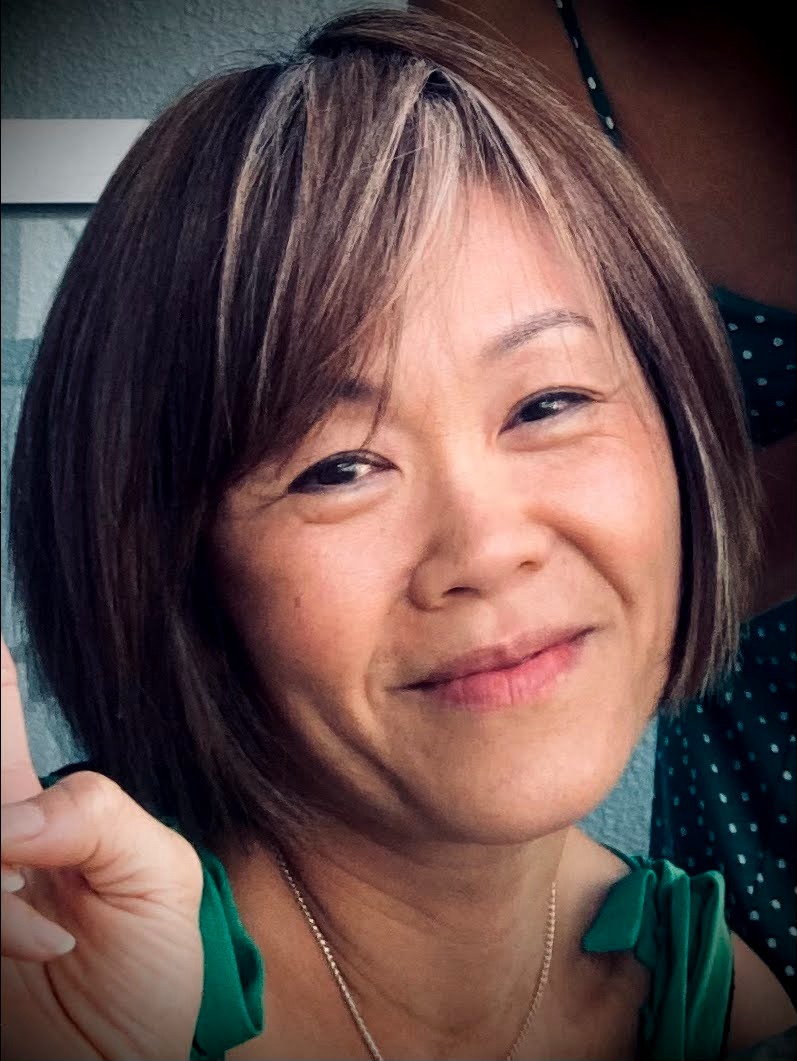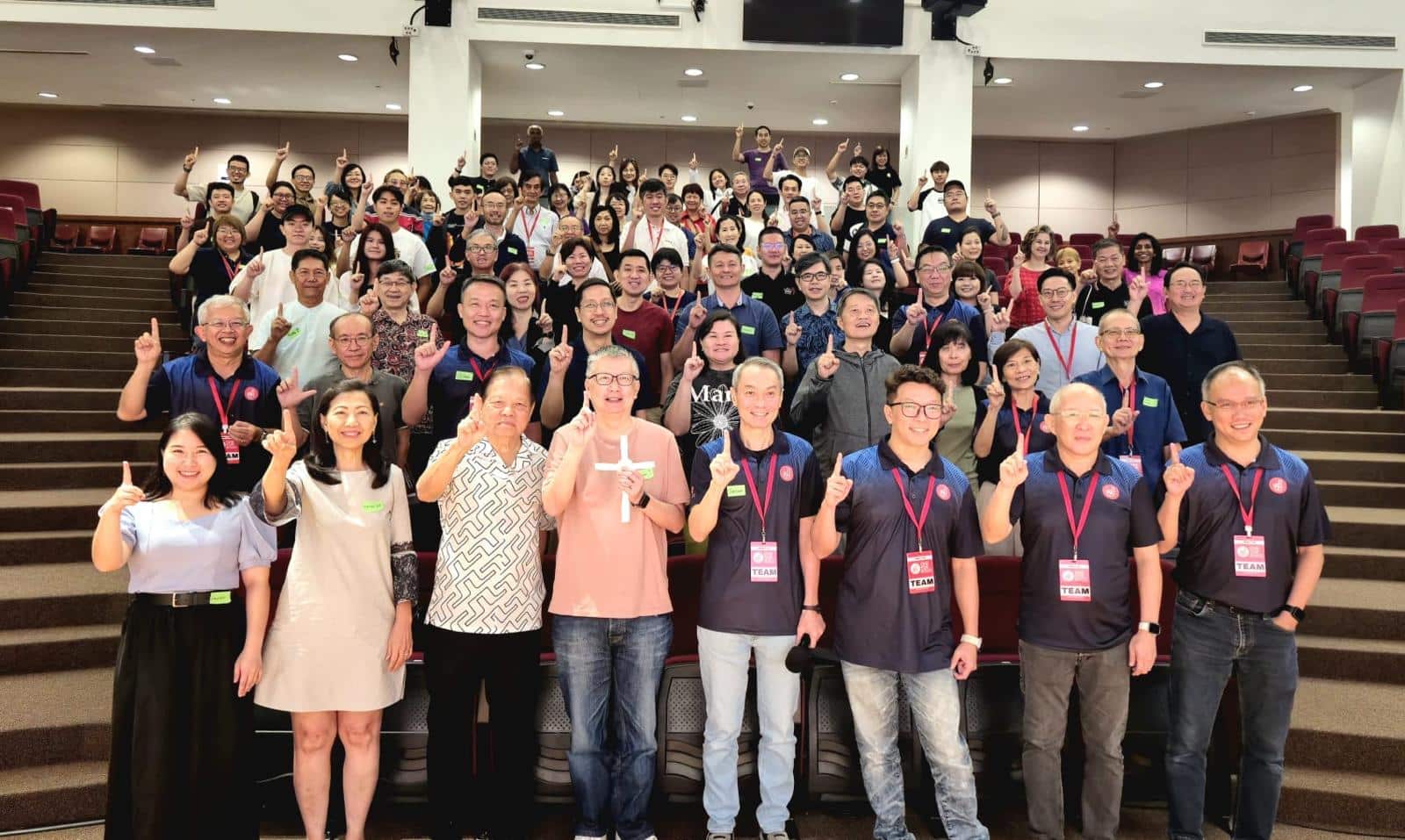“Our heart broke for them”: Singaporeans are finding ways to bring the Father to fatherless children in rural Asia
Peck Sim // January 12, 2024, 5:03 pm
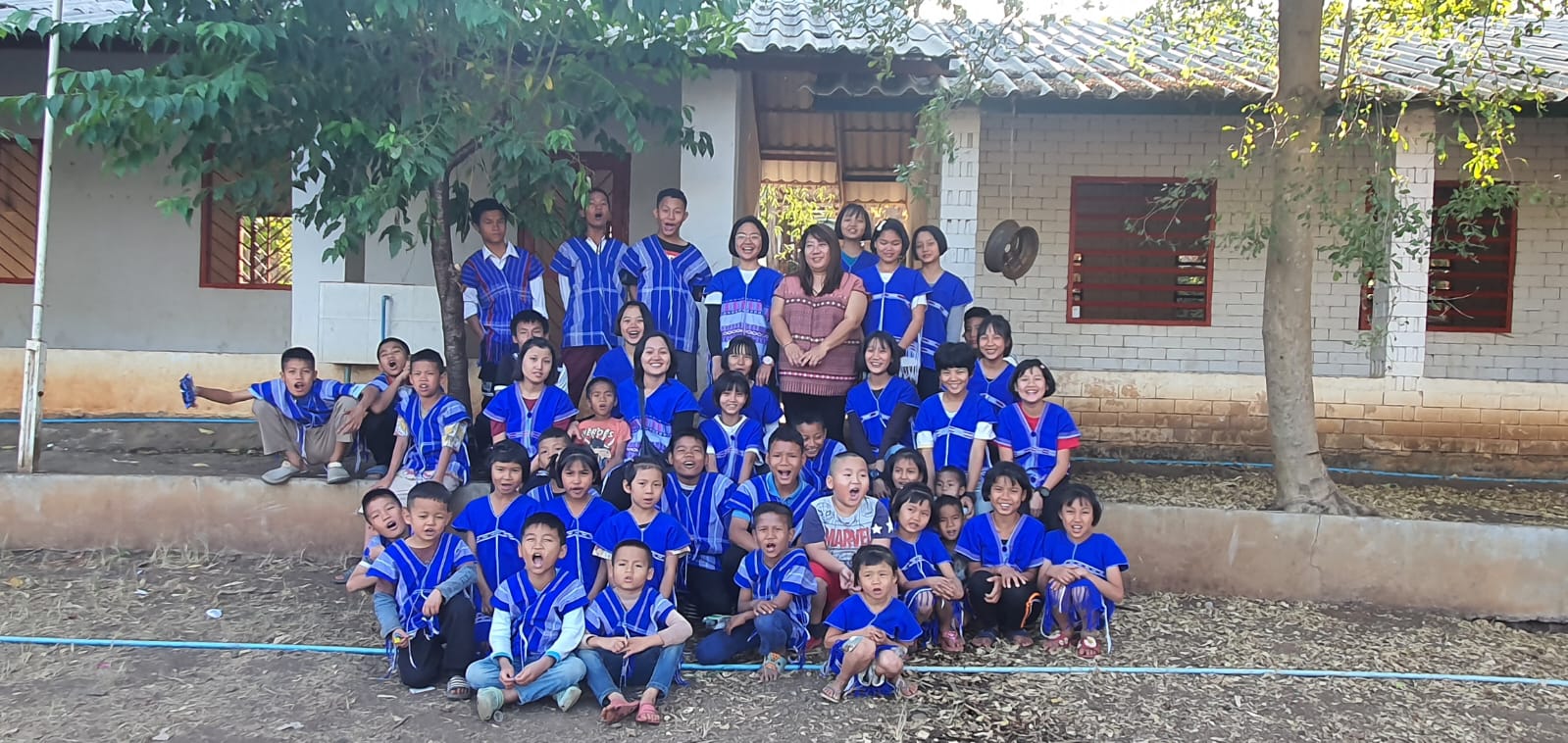
Esther Yi Lazum is "mum" to 72 children in the Thai orphanage she runs with her husband Pastor Gum San Hpauyu. The Umphang orphanage is funded by Singaporeans, one of whom used his CPF payout towards supporting the orphanage. Photo by the Umphang orphanage.
Esther Yi Lazum is never certain how old each child in her orphanage is.
For the past 15 years, the 44-year-old has been picking up children abandoned along the border of Thailand and Myanmar, where the conflict between the Burmese junta and the tribal armies is fierce.
She brings them into her orphanage in the remote border town of Umphang, where a home and education is provided.
Esther, herself a stateless Burmese student in Thailand at the time, set up the Umphang orphanage in January 2008 with a combination of seed funding from a Finnish missionary couple, her meagre salary as a tour guide and a blazing passion to love the abandoned children.
Esther is a Christian who has heeded the call of Jesus to look after orphans and widows in their distress (James 1:27).
Together with Julian Ong*, a Singaporean who gave up a lucrative career as a doctor in Singapore to build Peace Child Ministry for the rural poor in Nepal, and Singapore businessman Chan Seek Kian, who set up Hope Learning Centre to provide after-school care to village children in Cambodia, Esther has a calling: To defend the defenceless, love the unloved and reveal the Father to the fatherless.
A refuge for stateless children: Umphang orphanage, Thailand
There was one overwhelming reason Esther started the Umphang orphanage. “My heart broke for them,” Esther told Salt&Light simply.
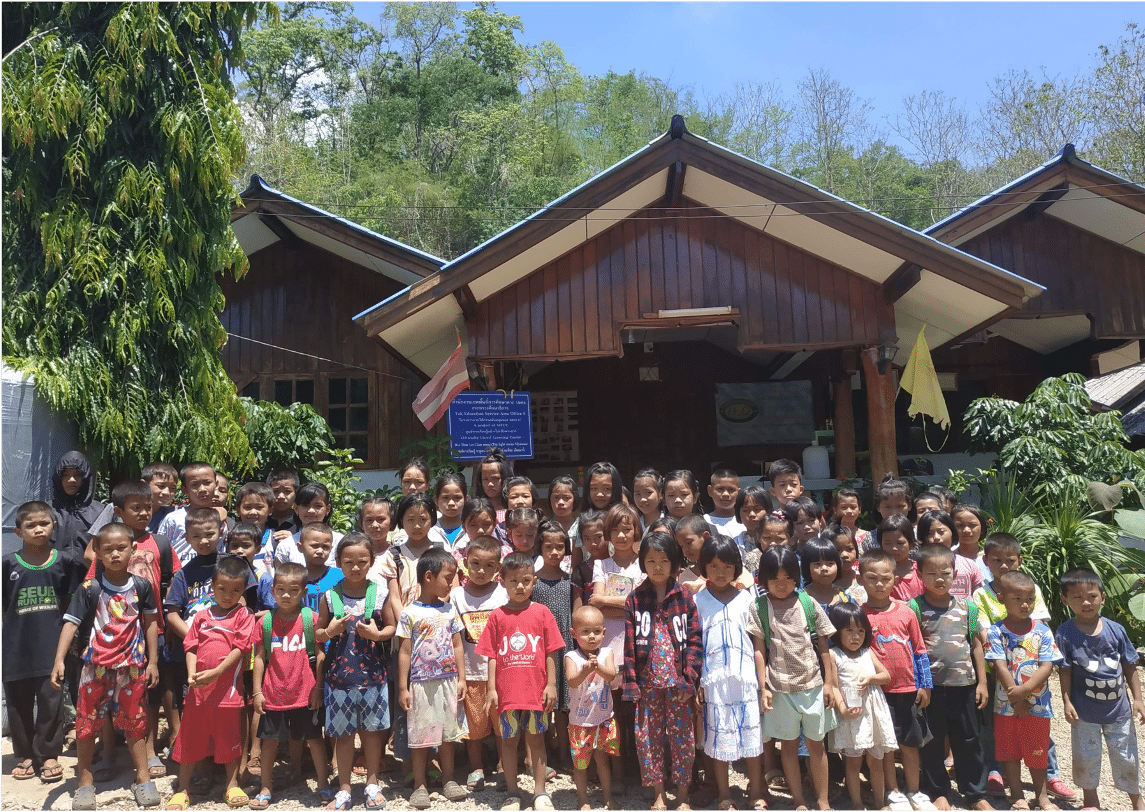
Children come or were left at the Umphang orphanage from as young as a year old.
“There was nothing in Umphang; no church, no children’s home. I wanted to share Jesus’ love with them.”
The orphanage, which is primarily funded by Singaporeans, started in Umphang with about 30 children from the surrounding villages. Some were orphans, some were abandoned, some came from poor and broken families unable to care for them.
“There was nothing in Umphang; no church, no children’s home. I wanted to share Jesus’ love with them.”
The children come or were left at the orphanage from as young as a year old. Most belong to an ethnic tribe fighting for independence in Myanmar.
Two more boarding houses have since been added in Mae Sot, about four hours away, to accommodate another 40+ children who have grown up and progressed to high school.
Esther runs the orphanages with her husband Pastor Gum San Hpauyu, 49, who pastors the churches in the Umphang and Mae Sot orphanages.
The couple operates a free mission school at the Umphang orphanage, conducting Bible lessons as well as classes in the Burmese curriculum. The school also serves as an outreach to other stateless children who have no access to school.
The children are picked up from surrounding villages and brought to school every day.
“We train them to know Jesus very well and to accept Jesus into their life 100%. That is the first important thing that I do.”
On Sundays, the children are invited to Sunday school, where the major attraction for them is a free meal. Lunch is provided each day at school as well.
Colin Soh, a Singaporean supporter of the orphanage, said: “The orphanage is meeting their needs, giving them meals and taking the opportunity to evangelise. And then they see and experience God’s love.”
“We train them to know Jesus very well and to accept Jesus into their life 100%,” Esther told Salt&Light. “I grow them in the worshipping life. That is the first important thing that I do.”
Many of the children suffer psychological trauma from the civil war and only Jesus can heal them, Esther pointed out.
There are typically about 90 children each day.
They receive medication, education and recognition by the Thai government once they are registered in the school. These children can then progress to middle and high school in a Thai public school.
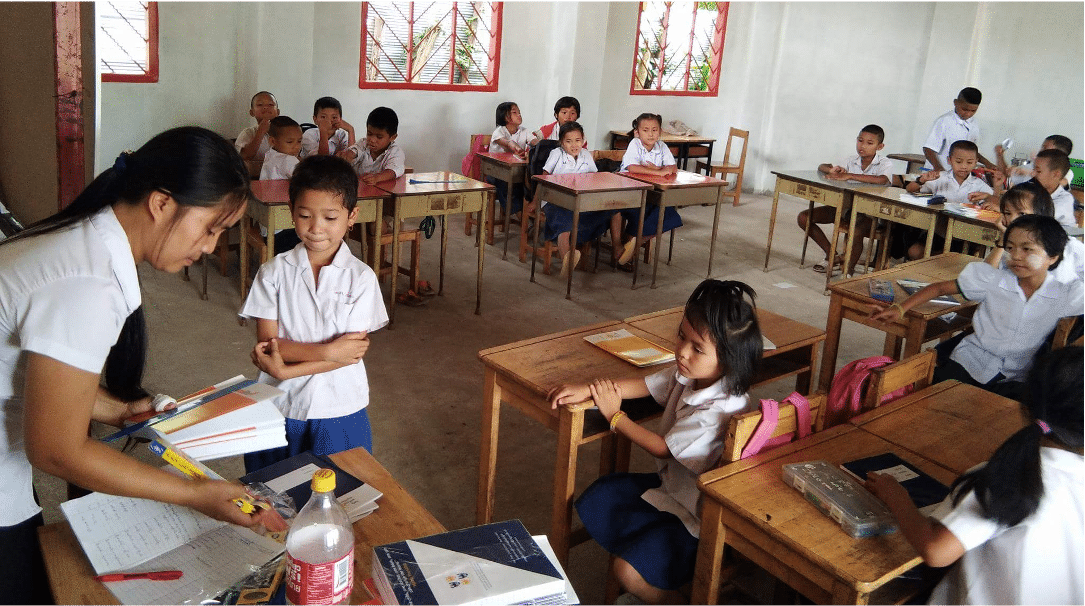
These stateless children are recognised by the Thai government once they are registered in the Umphang school.
The number of children has jumped within the last 12 months to about 70 as renewed fighting along the border drove more families and children across the border to Thailand.
The orphanages are bursting at the seams with the sudden increase in the number of children.
“They see and experience God’s love.”
“Now toilets are full and everything is full,” Esther remarked. “We have no place.”
Yet she rejoices because she believes God brought the children to them and will bring more children.
Esther and Pastor Gum San are working on making the orphanage self-sufficient by planting crops on land that was gifted to them by private donors. They plant rice on one farm and fruit such as avocados, mangoes, bananas and pumpkins on the other. They have also built a chicken coop that can house 1,000 chickens,
Many of the orphans have become old enough to help Esther and her husband in the orphanage. Some have finished high school and others in the university. They can write in Burmese, English and Thai.
“In the beginning I was very tired, but now I see much fruit,” Esther smiled.
How can we bless the Umphang orphanage children?
It takes at least $6,000 a month to run the orphanages in Umphang and Mae Sot. This goes into providing the children a roof over their head, feeding, educating, discipling and watching over them.
The ministry, The Light Asean Orphanage and Mission School, is supported by private donors in Singapore. To contribute to this work, please contact Colin Soh at [email protected].
Inspiring children to dream: Peace Child Ministry, Nepal
In a rural area in Nepal, a young mother stands with her five daughters for a photograph before a wooden hut. The father is nowhere to be found.
The little group stood obligingly still for the photograph, highlighting the dissonance between the happy occasion of taking a family photo and their abject condition.
The entire family lives in a home smaller than a master bedroom of an HDB flat in Singapore, the communal toilet located in a separate location. The dirt floor is where they sleep, cook, eat and – when there is light – study.
A zinc roof keeps out the rain and the elevated floor ensures some degree of dryness even in the wet season. But protection from the heat and pestilence is non-existent.
The children skipped school that day but no one seemed to care.
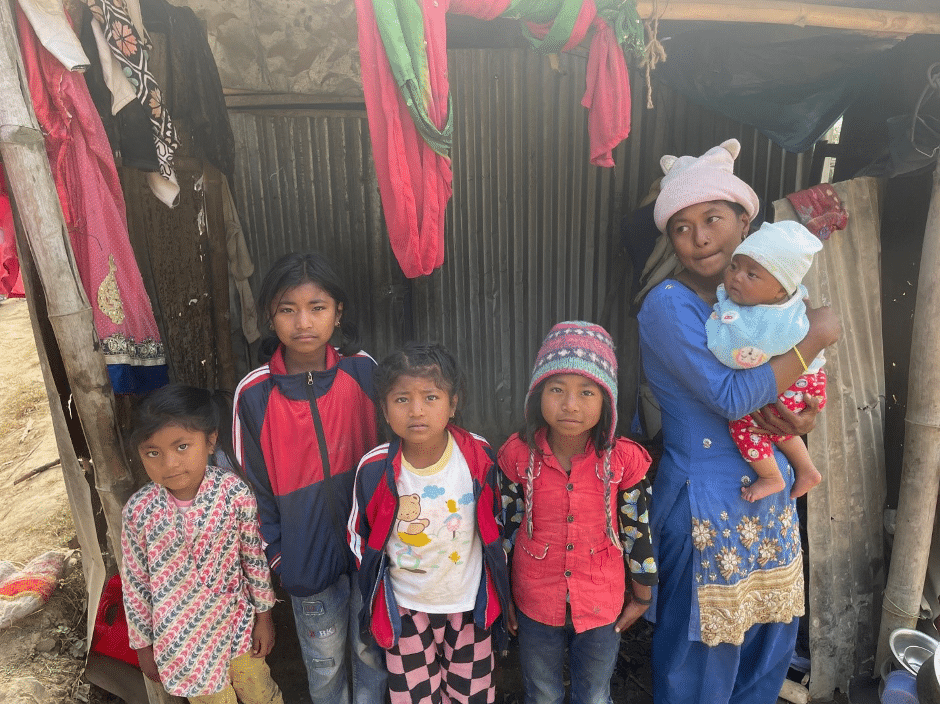
Someone cares. Three of the girls in this family sing in the Carmichael Girls’ Hostel Choir. Photo by Julian.
Except Someone does. And Someone has put in the heart of Julian Ong*, 56, to care as well.
Julian gave up a lucrative career as a doctor in Singapore to serve the poor in the rural areas of Nepal. He started Peace Child Ministry (PCM) in 2018 providing simple education to children of itinerant brick factory workers.
The ministry has since grown to include two Carmichael Girl’ Hostels, global education using its in-house education software – School in a Thumbdrive (SIT) – church plants in south and west Nepal and a medical clinic in the rural area.
“We want to help them to hope.”
The heart of ministry, however, is children, with the mission “to help them hope”.
Many remain locked in poverty or, worse, are trafficked abroad, a grim reality for the poor in Nepal, Julian lamented.
When Nepali children are asked what they want to be when they grow up, they cannot answer because they cannot visualise beyond working on the farm or being a cleaning woman, said Julian.
“We want to help them to hope,” he said.
PCM started the first Carmichael Girls’ Hostel in Kathmandu in 2020 and the second in Bardiya, midwestern Nepal, last June. Together, the hostels take in 20 girls whose parents are missing. They have either abandoned the children, or cannot care for them, or have gone overseas to earn a living.
Three of the girls in the family taking the photo sing in the Carmichael Girls’ Hostel Choir (the oldest child was too old for the hostel and is needed at home to look after the baby). Their voices join with the rest of the girls in proclaiming in song: “Jesus loves me, this I know.”
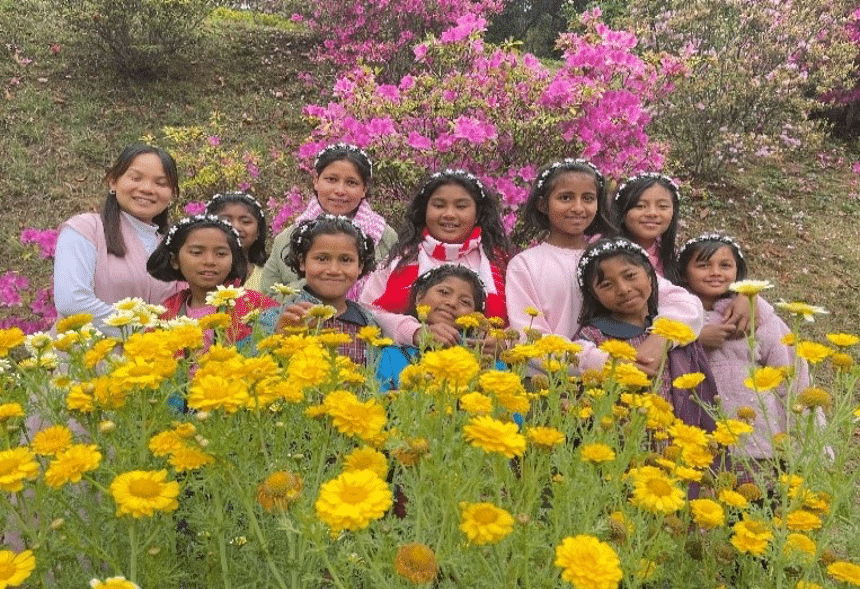
“They are happy, joyous and confident, because of what we are doing,” said Julian of the girls in the Carmichael Girls’ Hostel run by Peace Child Ministry. Photo by Julian.
They know Jesus loves them from the comfortable beds elevated from the clean linoleum floor, the bright yellow rooms equipped with a computer and a well-stocked library, the clean toilets and the secure compound.
They know it from the care and love of the chaplain and hostel warden who ensure they go to school, and from the Singapore volunteers who teach them English via Zoom each week.
PCM brings the girls into the hostels and sustains them until they are 18 years old.
“We have great hope for them to be well educated, get good jobs and contribute back to Nepal, to the Church and to the next generation,” Julian said.
“We hope that they, too, can visualise the bigger world and the opportunities around them.”
How can we bless the Peace Child children?
The best way to bless the children is to feed them on a sustained basis; to fulfil the emotional, physical, psychological and educational and spiritual needs of the children, Julian said.
This can be done by adopting a child. A monthly donation of $70 will feed a child for one month and provide school supplies, clothes, personal care and partly towards the salary of the hostel warden who cares for the children.
“These children will go on to influence their family members and the other children. It is an exponential impact.”
Donors know the names and biodata of the girls and each year. The girls write to their “aunties and uncles” overseas. The donors also write to the girls and Julian gets the occasional request to bring gifts from the donors to the girls.
“In all honesty, what we can do is really very limited, but the intangible of what we do is the confidence built in the children to believe in themselves,” he said. “They are happy, joyous and confident. I am always encouraged by the early fruit because these children will go on to influence their family members and the other children. It is an exponential impact.”
To adopt a child or find out more about The Peace Child Ministry, write to [email protected]. You can donate via PayLah or PayNow with the UEN 202219806D.
*Name has been changed for privacy.
Sowing seeds of social change: Hope Learning Centre, Cambodia
On a mission trip to Cambodia in 2001, Singaporean businessman Chan Seek Kian saw a mother feeding a toddler with rice and sugar instead of milk.
The scene moved Chan, now 77, enough to return to Cambodia nearly 10 years later. This time, it was to a village in the Kampot province, about two and half hours south of Phnom Penh. There, he saw another scene that broke his heart: Young children left playing unaccompanied by a pond.
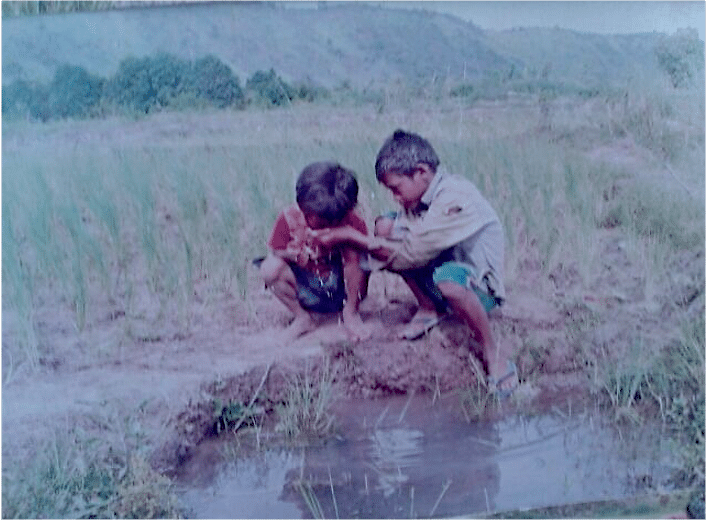
This scene of unaccompanied young children playing in the mud broke the heart of Chan Seek Kian. Photo by Chan Seek Kian.
“The first thing that struck me was that they were undernourished,” Seek Kian recounted. “The second thing was that they were illiterate. The final was that they did not have parents to watch over them – that is the tragedy.”
“We started by feeding them because they were so hungry, they could not focus on school.”
A friend connected him to a former principal of a Cambodian school, who brought him around the villages. He saw the same scene repeated over and over.
So Seek Kian roped in two other friends, both in their sixties – Raymond Yong, a businessman, and Elin Tan, an accountant – to start Kokkos Resource. They hope to break the poverty cycle in the community through education.
A year later, in 2014, the Hope Learning Centre (HLC) was established to provide after-school care to children in the three villages within the Prey Thnang Commune in Kampot.
The first ministry of HLC was feeding the children in the village with a meal before transporting them to school.
“We started by feeding them because they were so hungry, they could not focus on school,” Seek Kian said. The centre also safeguards the welfare of children by providing a secure compound, conducting health checks, as well as teaching them basic hygiene.
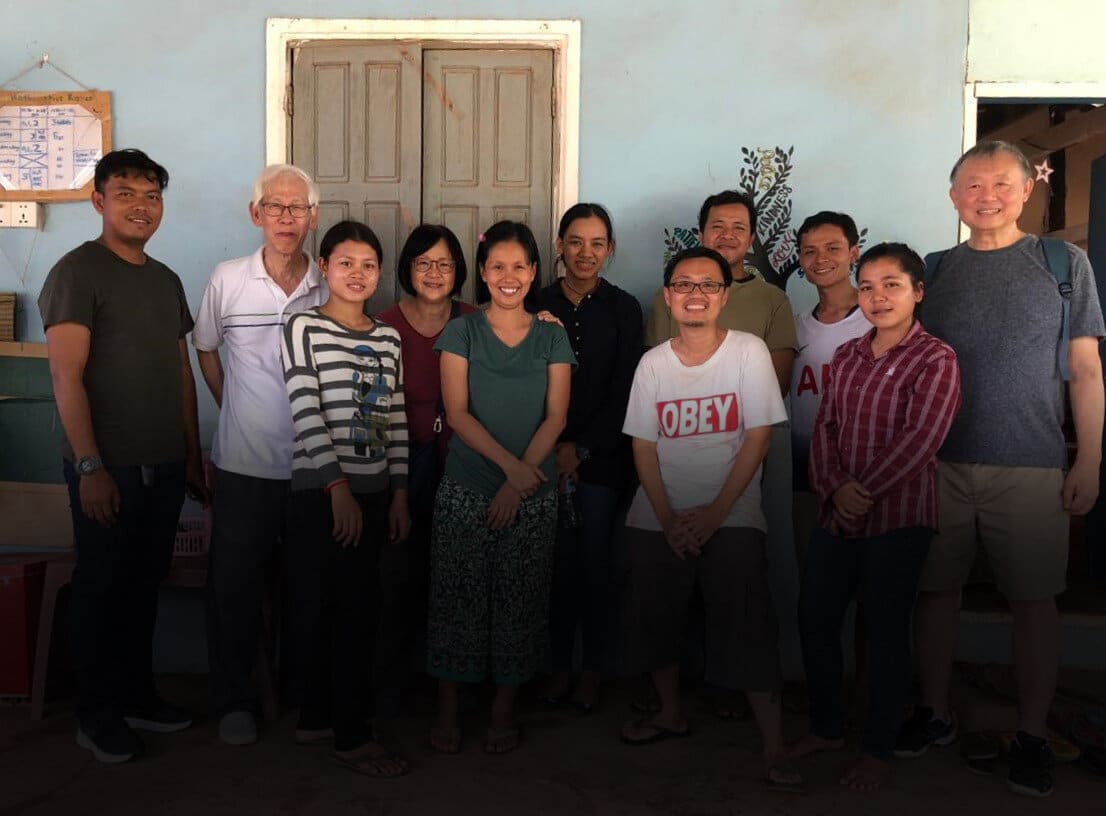
Kokkos Resource is founded by three Singaporeans: Chan Seek Kian (second from left), Elin Tan (fourth from left), and Raymond Yong (extreme right) who hope to help break the poverty cycle in Kampot villages. Photo by Kokkos Resource.
“Security is very important, otherwise people can just walk in, talk to the kids and grab them,” he explained.
The centre is fitted out with lighted classrooms, educational materials and computers, clean water and clean toilets, necessities so often taken for granted in Singapore. The grounds around the centre are maintained regularly for the children to play team games and other extra-curricular activities integrated into the centre’s educational program.
“Our focus is not just education, but also environmental when they are given clean water, and social, such as creating an environment where they can feel accepted,” he added.
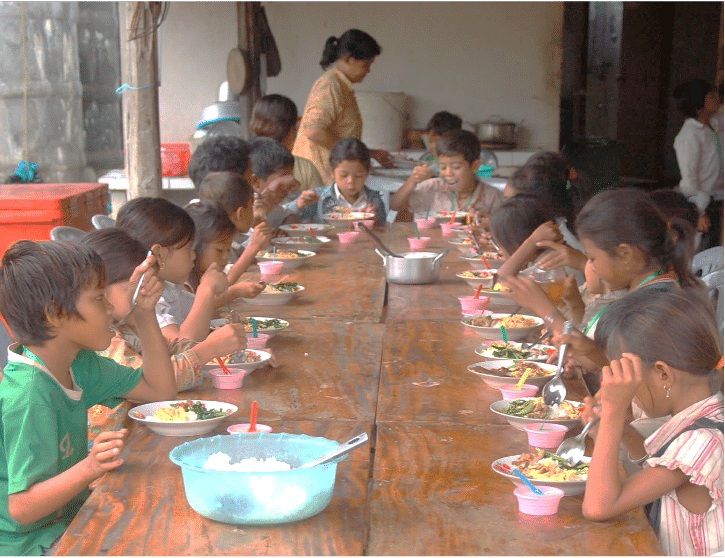
The first ministry of Kokkos Resource is to feed the children who were too hungry to focus on school. Photo by Chan Seek Kian.
The children at HLC range from six to 18 years old. The centre takes care of the younger children after school by providing a meal either before or after school and spending time with them for half a day.
The centre provides financial support to the older children with bursaries. On weekends, the teachers conduct Bible study with the children and youths.
“In the beginning, you could see no hope on the faces of these children. Now they are happier and more secure.”
HLC focusses on grounding the 6-12 year olds in godly values, equipping them with the fundamentals of literacy and personal skills, and motivating them to learn. Bible characters are used extensively in the learning materials to introduce biblical values.
The centre also provides a self-learning education with the Accelerate Christian Eduction (ACE) curriculum. The goal is for the children to be independent learners once they complete grade nine at age 14.
The desire is for the children and youths to love God, to develop confidence, be competent self-learners who are sociable, connected, and are responsible contributors to their families and communities.
“When I finish high school I will continue to study at university,” 17-year-old Rith Thearin wrote in a letter to her teachers at HLC. “ When my dream becomes true, I will teach other children to become a good child (sic), have hope and know Jesus in their family, and good people in my country too.”
Said Seek Kian: “In the beginning, you could see no hope on the faces of these children. Every day is a new challenge for them. Now we can see that the kids, especially the older ones, are happier and more secure.”
How can we bless the HLC children?
The number of children at HLC has more than tripled in the last 10 years to almost 100 today.
The greatest constraint is difficulty securing teachers and mentors for the children. There are eight teachers in the centre, and two in Singapore who equip those on the ground via live online training.
In the pipeline for the end of the year is an online facility at the HLC staff to conduct proper teacher training. If successful, the programme will be extended to any church or NGO that needs this expertise, said Seek Kian. Currently, Kokkos is developing a training programme that is a hybrid of online training and regular in-person visits.
Kokkos is also seeking volunteers with social enterprise skills to help families start their own social enterprises so they can continue to work in their communities to improve their economic status.
To partner with Kokkos Resource on sowing seeds of change in this rural community, contact Chan Seek Kian at [email protected] or +65 9733-9939.
RELATED STORIES:
“I want you to know I am here for you”: He spent 14 years caring for China’s left-behind children
We are an independent, non-profit organisation that relies on the generosity of our readers, such as yourself, to continue serving the kingdom. Every dollar donated goes directly back into our editorial coverage.
Would you consider partnering with us in our kingdom work by supporting us financially, either as a one-off donation, or a recurring pledge?
Support Salt&Light